The North East is comprised of: Connecticut, Delaware, Maine, Maryland, Massachusetts, New Hampshire, New Jersey, New York, Pennsylvania, Rhode Island, and Vermont.
Connecticut
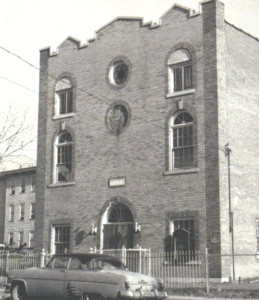 There is very meagre information about organized Jewish communities in Connecticut prior to the 19th century. Part of that may be due to the fact that no Jewish congregations were permitted to incorporate prior to 1843, when the Statutes were amended by the addition of the following: Jews who may desire to unite and form religious societies may have the same rights, powers, and privileges as are given to Christians of every denomination by the laws of the State.
There is very meagre information about organized Jewish communities in Connecticut prior to the 19th century. Part of that may be due to the fact that no Jewish congregations were permitted to incorporate prior to 1843, when the Statutes were amended by the addition of the following: Jews who may desire to unite and form religious societies may have the same rights, powers, and privileges as are given to Christians of every denomination by the laws of the State.
There is no doubt, that Jews would assemble for worship even without statutory permission. The first Jewish congregations on record are the Beth Israel of Hartford and Mishkan Israel of New Haven. Beth Israel in Hartford was organized in 1843, but there is reason to believe that they held services as early as 1839. Mishkan Israel, in New Haven, assembled for worship as early as December 1840.
The first Jewish refugees arrived from Russia in February 1882, and were followed by a steady influx of Russian-Jewish families. By 1887 the Jewish population had grown to about 3,200. In the next decade it grew to about 8,000 and the increase was greatly accelerated in the wake of the Kishinev pogrom of 1903.
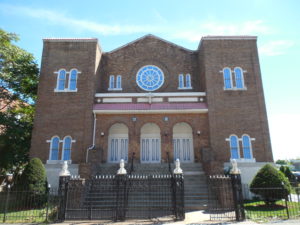 By 1910, the Jewish population in Hartford had increased to about 6,500. Despite their lack of money, education, and sophisticated economic skills, the Eastern European newcomers brought a religious tradition of a strong, supportive community. By the beginning of World War I, New Haven Jewry numbered about 20,000.
By 1910, the Jewish population in Hartford had increased to about 6,500. Despite their lack of money, education, and sophisticated economic skills, the Eastern European newcomers brought a religious tradition of a strong, supportive community. By the beginning of World War I, New Haven Jewry numbered about 20,000.
By the 1920s, the wealthier German Jews had already left the immigrant neighborhoods, with a few moving farther south toward Beth Israel Temple, which had been erected in 1876, on Charter Oak Avenue. The Congregation Beth Israel of Hartford was located in the late 1960s in the town of West Hartford, and Mishkan Israel Congregation was located in the town of Hamden.
By the end of the 20th century, few Jews remained in the city of Hartford. However, the Greater Hartford Jewish community, estimated to be about 32,000 in 2012, has flourished with synagogues, schools, social service agencies, and the Jewish Federation of Greater Hartford maintaining a strong presence in the suburbs.
 The Jewish population of Connecticut grew with the in-flux of Jews from overseas. Thus, it is estimated that in 1877 there were 1,492 Jews in Connecticut; in 1905, 8,500; in 1917, 66,862; in 1927, 91,538; and in 1937, 94,080. In 1969 it was estimated that the Jewish population of Connecticut was approximately 105,000. In the beginning of the 21st century, there were more than 125,000 Jews residing in the state.
The Jewish population of Connecticut grew with the in-flux of Jews from overseas. Thus, it is estimated that in 1877 there were 1,492 Jews in Connecticut; in 1905, 8,500; in 1917, 66,862; in 1927, 91,538; and in 1937, 94,080. In 1969 it was estimated that the Jewish population of Connecticut was approximately 105,000. In the beginning of the 21st century, there were more than 125,000 Jews residing in the state.
The largest growth was in the Southern part of Connecticut, in the suburbs of New York City, mostly around the Westport and Greenwich areas. The largest After World War II, Jews moved from Hartford to the suburbs and subsequently no synagogues remained in downtown Hartford.
Delaware
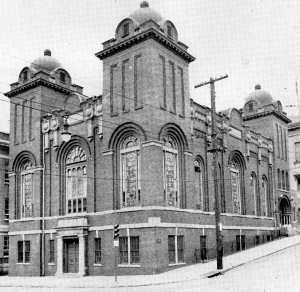 Only a handful of Jews, settled in the area before the middle of the 19th century when Jewish retailers from families in Philadelphia and Baltimore began opening stores in Wilmington. In 1879, 18 Jewish merchants formed Delaware’s first Jewish organization, the Moses Montefiore Society, as a religious, educational, and charitable organization. Delaware became the last of the original colonies to have an organized Jewish community and worship services for the High Holidays.
Only a handful of Jews, settled in the area before the middle of the 19th century when Jewish retailers from families in Philadelphia and Baltimore began opening stores in Wilmington. In 1879, 18 Jewish merchants formed Delaware’s first Jewish organization, the Moses Montefiore Society, as a religious, educational, and charitable organization. Delaware became the last of the original colonies to have an organized Jewish community and worship services for the High Holidays.
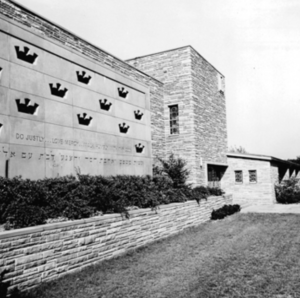 In the mid-19th century, a small number of Jewish retailers opened businesses in Dover, the state capital, and in several towns in southern Delaware.
In the mid-19th century, a small number of Jewish retailers opened businesses in Dover, the state capital, and in several towns in southern Delaware.
Jewish growth in the area was slower than in Wilmington, but by the early 20th century, Jewish retailers, peddlers, canners, distillers, and hotel-keepers lived in many towns of southern Delaware including Dover, Lewes, Georgetown, Milford, Millsboro, Seaford, and Smyrna.
In 1897, with the aid of HIAS, the Isaac Benioff family settled in Kent County, becoming Delaware’s first Jewish farmers. The Jewish Agriculture Society helped an additional 24 Jewish families establish farms in southern Delaware, primarily in Kent County, between 1912 and 1929. Religious services were held informally in homes until 1939 when the Jewish Congregation of Lower Delaware, a predecessor of today’s Conservative synagogue, Congregation Beth Shalom, was incorporated.
 With the influx of Jews from Eastern Europe, the Jewish population of Wilmington grew quickly reaching some 4,000 by 1920. By 1929, they had established three Orthodox synagogues, Adas Kodesch, Chesed Shel Emeth, and Machzikey Hadas; a Reform synagogue, Temple Beth Emeth; and a Conservative synagogue, Congregation Beth Sholom. These organizations and synagogues (Adas Kodesch and Chesed Shel Emeth merged in 1957) continued to serve the Wilmington population in 2005.
With the influx of Jews from Eastern Europe, the Jewish population of Wilmington grew quickly reaching some 4,000 by 1920. By 1929, they had established three Orthodox synagogues, Adas Kodesch, Chesed Shel Emeth, and Machzikey Hadas; a Reform synagogue, Temple Beth Emeth; and a Conservative synagogue, Congregation Beth Sholom. These organizations and synagogues (Adas Kodesch and Chesed Shel Emeth merged in 1957) continued to serve the Wilmington population in 2005.
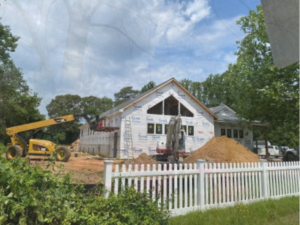 The Hillel Foundation began activities at the university by 1948. In the early 21st century Hillel served some 800 students a year. The Newark Jewish Community, later known as Temple Beth El, the state’s only Reconstructionist synagogue, was organized in 1954.
The Hillel Foundation began activities at the university by 1948. In the early 21st century Hillel served some 800 students a year. The Newark Jewish Community, later known as Temple Beth El, the state’s only Reconstructionist synagogue, was organized in 1954.
In 1997, Jewish vacationers and retirees from Philadelphia, Baltimore, Washington, and Wilmington along with Jews from Lewes, Rehoboth, and the surrounding Delaware beach communities formed the Seaside Jewish Community. The group, which numbered more than 150 families in 2005, held religious services, educational programs including a Hebrew school, and social events. As of 2017, Delaware’s Jewish population was approximately 15,100.
Maine
 German Jews were among the earliest Jewish residents of the state and began to settle in Bangor by 1829. Bangor developed numerous Jewish institutions and a Jewish cemetery was created in Waterville in 1830. These Jews, many of them originating in the Boston area, came to Maine as peddlers, walking the roads of the huge state and going from farm house to farm house to sell their wares.
German Jews were among the earliest Jewish residents of the state and began to settle in Bangor by 1829. Bangor developed numerous Jewish institutions and a Jewish cemetery was created in Waterville in 1830. These Jews, many of them originating in the Boston area, came to Maine as peddlers, walking the roads of the huge state and going from farm house to farm house to sell their wares.
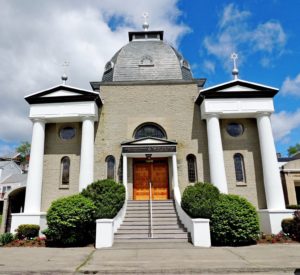 The first synagogue in Portland, Congregation Beth Judah, was founded in 1883. Congregation Ahawas Achim, which was officially formed in 1849.
The first synagogue in Portland, Congregation Beth Judah, was founded in 1883. Congregation Ahawas Achim, which was officially formed in 1849.
Congregation Shaarey Tphiloh, founded in 1904, is most likely the oldest extant synagogue in Maine, celebrating its centennial in 2004. In 1930, there were about 5,500 Jewish Mainers.
Maine’s largest cities were home to a wide variety of Jewish communal institutions in the mid-20th century. There were, for example, 16 Jewish organizations in Greater Bangor in the 1950s, and about half of the Jews in that region belonged to at least three of them.
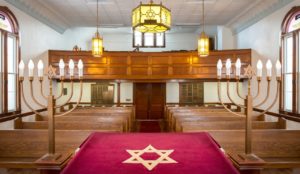 Jews in smaller communities, in contrast, often struggled to support a single synagogue and to obtain kosher food. Nearly two-thirds of Maine’s resorts refused to accept Jewish guests in the 1950s, the highest percentage of any state in the union. Discrimination of this nature persisted into the 1970s. Jews continue to move to Maine in small but significant numbers. There are about 14,000 Jewish Mainers today.
Jews in smaller communities, in contrast, often struggled to support a single synagogue and to obtain kosher food. Nearly two-thirds of Maine’s resorts refused to accept Jewish guests in the 1950s, the highest percentage of any state in the union. Discrimination of this nature persisted into the 1970s. Jews continue to move to Maine in small but significant numbers. There are about 14,000 Jewish Mainers today.
Maryland
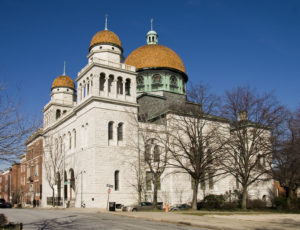 Jews have settled in Maryland since the 17th century. By 1825, there were about 150 Jews. Between 1830 and 1870 over 10,000 Jews, primarily from Germany and other areas of Central Europe, settled in the state. Eastern European Jews began to trickle into Maryland during the 1850s and arrived in large numbers from the 1880s.
Jews have settled in Maryland since the 17th century. By 1825, there were about 150 Jews. Between 1830 and 1870 over 10,000 Jews, primarily from Germany and other areas of Central Europe, settled in the state. Eastern European Jews began to trickle into Maryland during the 1850s and arrived in large numbers from the 1880s.
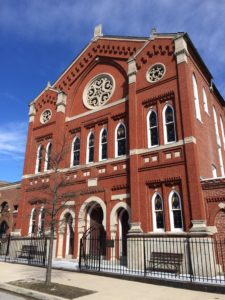 While the vast majority of Jewish immigrants were drawn to Baltimore, Jews also settled in smaller towns as peddlers and merchants. In 1853, the first congregation outside Baltimore was established in Cumberland, an important trading and transportation center in the western part of the state.
While the vast majority of Jewish immigrants were drawn to Baltimore, Jews also settled in smaller towns as peddlers and merchants. In 1853, the first congregation outside Baltimore was established in Cumberland, an important trading and transportation center in the western part of the state.
By the time mass immigration ended in the mid-1920s, there also existed congregations in Frederick, Hagerstown, Annapolis, Frostburg, Brunswick, and Salisbury. Statewide, the Jewish population reached about 40,000 in 1900 and grew to 65,000 by the end of the immigrant period.
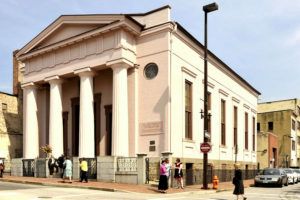 In the years following World War II, more than 50,000 Jews arrived from Washington, D.C., settling in the nearby Maryland suburbs of Montgomery and Prince Georges counties.
In the years following World War II, more than 50,000 Jews arrived from Washington, D.C., settling in the nearby Maryland suburbs of Montgomery and Prince Georges counties.
By 1998, this region was home to 104,500 Jews. Jews also increasingly established themselves in areas outside the Washington suburbs and Baltimore, with 10,000 residing in Howard County, almost 2,000 in Annapolis, and more than 1,000 in Frederick and in Harford County.
As of 2017, Maryland’s Jewish population was approximately 240,000 people.
Massachusetts
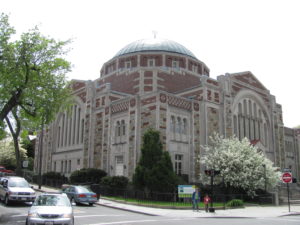 Massachusetts’ first permanent Jewish community was established in the late 1830s in Boston, where Central European settlers established the state’s first Jewish congregation, Ohabei Shalom, in the 1840s. Merchants established themselves in the factory and mill towns, including Pittsfield (1850), where most were of German origin; Worcester (1860); Holyoke (1873; first congregation, Agudas Achim, founded 1895); Springfield (1881); Fall River (1881); Lawrence (late 1880s); Lynn (1893); and Haverhill (1897).
Massachusetts’ first permanent Jewish community was established in the late 1830s in Boston, where Central European settlers established the state’s first Jewish congregation, Ohabei Shalom, in the 1840s. Merchants established themselves in the factory and mill towns, including Pittsfield (1850), where most were of German origin; Worcester (1860); Holyoke (1873; first congregation, Agudas Achim, founded 1895); Springfield (1881); Fall River (1881); Lawrence (late 1880s); Lynn (1893); and Haverhill (1897).
Some Sephardi Jews lived in New Bedford, which has a Jewish cemetery said to date from the post-Revolutionary era, as late as the 1850s, when the first German Jews arrived. One of these was Leopold Morse , who served in Congress from a Boston district in 1877–85 and again in 1887–89. A burial society, Bnay Israel, was formed in New Bedford in 1857.
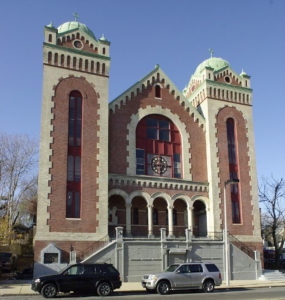 East European Jews arrived in New Bedford about 1877. The first congregation, Ahabath Achim, was founded in 1893 and purchased a cottage house as its first synagogue. A new synagogue was dedicated in 1899. In 1898 Congregation Chesed Shel Emes was incorporated; it occupied a new synagogue building in 1903.
East European Jews arrived in New Bedford about 1877. The first congregation, Ahabath Achim, was founded in 1893 and purchased a cottage house as its first synagogue. A new synagogue was dedicated in 1899. In 1898 Congregation Chesed Shel Emes was incorporated; it occupied a new synagogue building in 1903.
At the beginning of the 21st century there were about 250 synagogues in 85 communities, most of them erected in the 1960s and beyond either as the first houses of worship in newly settled areas or as replacements for older sanctuaries in communities where Jewish residence antedated the massive move out of Boston.
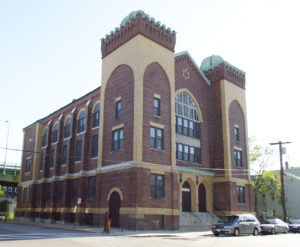 As of 2017, Massachusetts’s Jewish population was approximately 293,080. In 2013, the Greater Boston metropolitan area, embracing large sections of New England, was the tenth-largest Jewish metropolitan area in the United States, including some 10,500 Jews from the former Soviet Union, most of whom arrived after 1985.
As of 2017, Massachusetts’s Jewish population was approximately 293,080. In 2013, the Greater Boston metropolitan area, embracing large sections of New England, was the tenth-largest Jewish metropolitan area in the United States, including some 10,500 Jews from the former Soviet Union, most of whom arrived after 1985.
More than half of the community’s Jews were engaged in professional and technical work, and 40 percent of Jewish adults held advanced degrees. The number of Jews also significantly increases during the school year as the number of colleges and universities in the Boston area and in all of Massachusetts is high and the Jewish student population significant.
New Hampshire
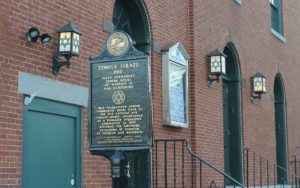 One of the original thirteen colonies which broke from England in 1776, New Hampshire is home to approximately 10,120 Jews. The Jewish population is concentrated in the more urban south and southeast section (Manchester, Concord, Nashua, Portsmouth, and the seacoast).
One of the original thirteen colonies which broke from England in 1776, New Hampshire is home to approximately 10,120 Jews. The Jewish population is concentrated in the more urban south and southeast section (Manchester, Concord, Nashua, Portsmouth, and the seacoast).
The first mention of a Jewish family living in Portsmouth was around 1780. The next 50 years provided no official record of Jewish families living in Portsmouth. Several Jewish families did come here from Germany, but they did not form or maintain a Jewish community.
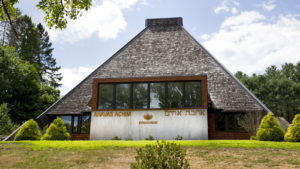 By the late 1880s, there was a nucleus of Jewish residents who tried to maintain their Jewish traditions. In 1890 the first congregation in the State, Adath Yeshurun, was organized. A second Manchester synagogue, Anshei Sfard (now Temple Israel) followed in 1897 as a dissident breakaway from the Adath Yeshurun group.
By the late 1880s, there was a nucleus of Jewish residents who tried to maintain their Jewish traditions. In 1890 the first congregation in the State, Adath Yeshurun, was organized. A second Manchester synagogue, Anshei Sfard (now Temple Israel) followed in 1897 as a dissident breakaway from the Adath Yeshurun group.
At the turn of the century, about 30 Jewish families were living in Portsmouth.
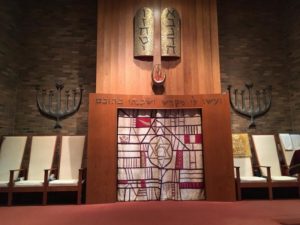 In 1911, the Methodist Church on State Street offered its building for sale. A committee of the Jewish congregation negotiated and agreed to buy the church edifice. They occupied the new synagogue in 1912. The Jewish families settled in an area close to the synagogue.
In 1911, the Methodist Church on State Street offered its building for sale. A committee of the Jewish congregation negotiated and agreed to buy the church edifice. They occupied the new synagogue in 1912. The Jewish families settled in an area close to the synagogue.
Rapidly, the area near the waterfront became a large Jewish settlement. This section was referred to as the “Puddledock” neighborhood. It included two kosher butcher stores, a Jewish bakery and three Jewish grocery stores. Many Jewish families moved to Portsmouth during World War I. By then, the Portsmouth Jewish community had grown to include approximately 50 families. The synagogue was redecorated in 1920. By World War II, the membership had risen to 75.
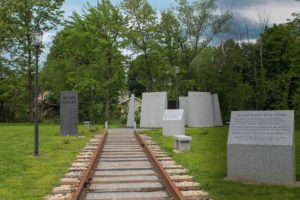 In 1940, the community purchased an adjacent building to house a Hebrew school. In 1967, Temple Israel, now with a membership of 125 families, expanded by adding a Community Centre.
In 1940, the community purchased an adjacent building to house a Hebrew school. In 1967, Temple Israel, now with a membership of 125 families, expanded by adding a Community Centre.
As the Jewish population increased, new synagogues have been established in towns like Amherst and Derry, home to few Jews two generations ago. In 2005 there were fifteen synagogues or temples about the state, and most had full-time rabbis. The immigrant community was hardly distinguishable from the general community.
As of 2017, New Hampshire’s Jewish population was approximately 10,120 people.
New Jersey
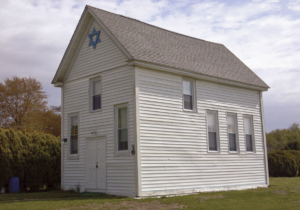 When Newark was founded in 1666, there already existed a flourishing, if small, Jewish community in New York City. Although the first organized Jewish communities in New Jersey were not established until the middle of the 19th century. In 1847, the B’Nai Jeshurun Synagogue was founded in Newark. It served 35 families, which increased to 60.
When Newark was founded in 1666, there already existed a flourishing, if small, Jewish community in New York City. Although the first organized Jewish communities in New Jersey were not established until the middle of the 19th century. In 1847, the B’Nai Jeshurun Synagogue was founded in Newark. It served 35 families, which increased to 60.
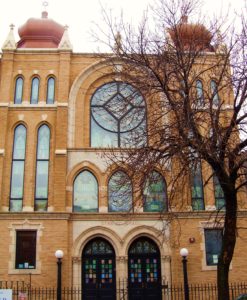 German Jews settled in Trenton, the state capital, in the 1840s. The Mt. Sinai Cemetery Association was incorporated in the town in 1857 and Har Sinai Congregation held its first service in 1858. The first organized Jewish community in New Jersey was in Newark, where Congregation B’nai Jeshurun was incorporated in 1848.
German Jews settled in Trenton, the state capital, in the 1840s. The Mt. Sinai Cemetery Association was incorporated in the town in 1857 and Har Sinai Congregation held its first service in 1858. The first organized Jewish community in New Jersey was in Newark, where Congregation B’nai Jeshurun was incorporated in 1848.
Other early communities with organized congregations included: Paterson (1847), New Brunswick (1861), Jersey City (1864), Bayonne (1878), Elizabeth (1881), Vineland (1882), Passaic (1899), Perth Amboy (1890), Atlantic City (1890), Woodbine (1891), Camden (1894), and Englewood (1896).
 The turn of the century brought more Jews from Germany and Russia. The Jewish population grew from 5,500 in 1900 to over 22,000 in 1910.
The turn of the century brought more Jews from Germany and Russia. The Jewish population grew from 5,500 in 1900 to over 22,000 in 1910.
The culture and its social, political, and religious organizations thrived in Newark. Jewish community life, which until World War II was largely distinguished by local congregations, quickly changed in the 1950s and 1960s with the mass migration to the suburbs.
As of 2017, New Jersey’s Jewish population was approximately 545,450 people.
New York
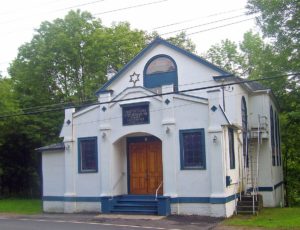 Jews have settled in New York state since the 17th century. The first significant group of Jews to arrive in New York were 23 Jewish immigrants in September 1654 fleeing from the Spanish and Portuguese Inquisitions. The first Jewish congregation in the city, Shearith Israel was established in 1654.
Jews have settled in New York state since the 17th century. The first significant group of Jews to arrive in New York were 23 Jewish immigrants in September 1654 fleeing from the Spanish and Portuguese Inquisitions. The first Jewish congregation in the city, Shearith Israel was established in 1654.
 Between the 1830s and 1880s, a growing number of middle class German Jews escaping from discrimination arrived in New York. Between 1880 and 1924, 2.5 million Ashkenazi Jews from the Russian Empire, Romania, and Austria-Hungary came to the United States. The Jewish population in New York went from about 80,000 in 1880 to 1.5 million in 1920.
Between the 1830s and 1880s, a growing number of middle class German Jews escaping from discrimination arrived in New York. Between 1880 and 1924, 2.5 million Ashkenazi Jews from the Russian Empire, Romania, and Austria-Hungary came to the United States. The Jewish population in New York went from about 80,000 in 1880 to 1.5 million in 1920.
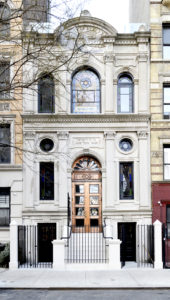 Founded in 1845, Temple Emanu-El on 5th Avenue in Manhattan’s Upper East Side is the oldest Reform Jewish congregation in New York City, which developed into the largest and most prestigious Reform congregation in the country.
Founded in 1845, Temple Emanu-El on 5th Avenue in Manhattan’s Upper East Side is the oldest Reform Jewish congregation in New York City, which developed into the largest and most prestigious Reform congregation in the country.
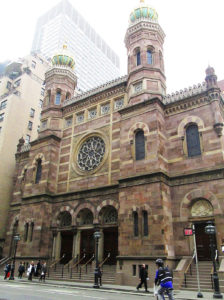 The Angel Orensanz Center, originally Anshe Chesed Synagogue, is situated in the Lower East Side and was the largest synagogue in the United States at the time of its construction. The building has been standing since 1849, making it the oldest surviving synagogue.
The Angel Orensanz Center, originally Anshe Chesed Synagogue, is situated in the Lower East Side and was the largest synagogue in the United States at the time of its construction. The building has been standing since 1849, making it the oldest surviving synagogue.
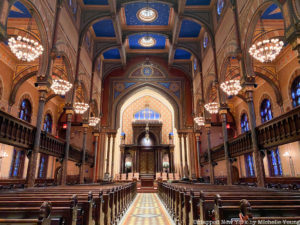 For 100 years, beginning at the end of the 19th century, Jewish life had a presence in the area. Synagogues were constructed in almost every hamlet. By 1999, 15 remained. Seven of them were listed on the National Register of Historic Places. They were: Agudas Achim, Livingston Manor; B’nai Israel, Woodbourne; Anshei Glen Wild, Glen Wild; Bikur Cholim B’nai Yisroel, Swan Lake; Chevra Ahavath Zion, Monticello; Tifereth Israel Anshei, Parksville; and the Jewish Community Center of White Sulphur Springs.
For 100 years, beginning at the end of the 19th century, Jewish life had a presence in the area. Synagogues were constructed in almost every hamlet. By 1999, 15 remained. Seven of them were listed on the National Register of Historic Places. They were: Agudas Achim, Livingston Manor; B’nai Israel, Woodbourne; Anshei Glen Wild, Glen Wild; Bikur Cholim B’nai Yisroel, Swan Lake; Chevra Ahavath Zion, Monticello; Tifereth Israel Anshei, Parksville; and the Jewish Community Center of White Sulphur Springs.
As of 2017, New York State’s Jewish population was approximately 1,759,570 people.
Pennsylvania
 Pennsylvania has nearly 30 cities and towns numbering over 100 Jews each, nine of which have over 1,000. About 88% of the Jews live in either greater Philadelphia or Pittsburgh. Approximately 197 congregations existed in Pennsylvania in 2002. Following the first permanent European settlement in Pennsylvania in 1643, the colony passed through Dutch (1655) and English (1664) rule until 1681, when William Penn acquired the territory. By 1656 New Amsterdam Jews traded along the Delaware River on Pennsylvania’s eastern border, and by 1681 several Jews probably settled in the southeastern area. While most of these Jews were of Spanish-Portuguese origin, during the 18th century many came from Central Europe. By the end of the American Revolution (1783), in which Jews played military and financial roles, about 800 Jews lived in the state.
Pennsylvania has nearly 30 cities and towns numbering over 100 Jews each, nine of which have over 1,000. About 88% of the Jews live in either greater Philadelphia or Pittsburgh. Approximately 197 congregations existed in Pennsylvania in 2002. Following the first permanent European settlement in Pennsylvania in 1643, the colony passed through Dutch (1655) and English (1664) rule until 1681, when William Penn acquired the territory. By 1656 New Amsterdam Jews traded along the Delaware River on Pennsylvania’s eastern border, and by 1681 several Jews probably settled in the southeastern area. While most of these Jews were of Spanish-Portuguese origin, during the 18th century many came from Central Europe. By the end of the American Revolution (1783), in which Jews played military and financial roles, about 800 Jews lived in the state.
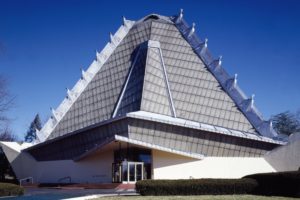 There were many areas of the state in which few Jews lived until numbers of German Jews arrived after 1825. Jews arrived in Pittsburgh, Reading, Pottsville, and Wilkes-Barre during the 1830s, in Harrisburg, Scranton , Erie, and Allentown during the 1840s, in Honesdale from 1849, and in Hazelton, Altoona, and Uniontown during the 1860s.
There were many areas of the state in which few Jews lived until numbers of German Jews arrived after 1825. Jews arrived in Pittsburgh, Reading, Pottsville, and Wilkes-Barre during the 1830s, in Harrisburg, Scranton , Erie, and Allentown during the 1840s, in Honesdale from 1849, and in Hazelton, Altoona, and Uniontown during the 1860s.
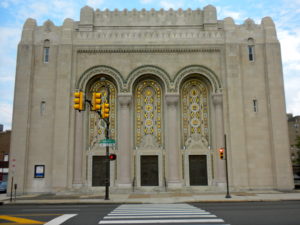 In some of these areas, real communities did not emerge for decades. In Lancaster, where Jews had lived during the colonial and early federal eras, a new community was not re-established until the latter part of the 19th century. In Harrisburg, the first congregation formed in 1853. In Hazelton, a traditional synagogue opened in 1893, and a second Reform congregation in 1906.
In some of these areas, real communities did not emerge for decades. In Lancaster, where Jews had lived during the colonial and early federal eras, a new community was not re-established until the latter part of the 19th century. In Harrisburg, the first congregation formed in 1853. In Hazelton, a traditional synagogue opened in 1893, and a second Reform congregation in 1906.
There were only nine congregations in Pennsylvania in 1856, which grew by 1877 to 26 for approximately 17,000 Jews. Daughters of Israel, the first national Jewish women’s organization, was founded in Pittsburgh in 1872. Between 1889 and 1910 over 100,000 East European Jews immigrated to the state, so that by 1917 there were 320,000 Jews.
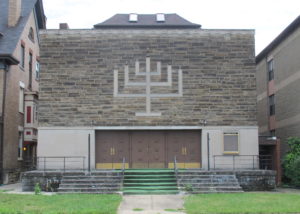 New Jewish communities arose in Bethlehem, Greensburg, Johnstown, McKeesport, Mt. Carmel, New Kensington, Shamokin, Sharon, Sunbury, and Washington during the 1880s, and in Braddock and West Chester during the next decade. By 1927 there were 405,000 Jews, the number growing moderately thereafter. In 1970, the estimated Jewish population of the state was 444,000, after which it declined. From the mid-1950s Jews tended to move from the large cities to developing suburbs. Thus, many Jews left Philadelphia for the western, northeastern, and northwestern suburbs of the city.
New Jewish communities arose in Bethlehem, Greensburg, Johnstown, McKeesport, Mt. Carmel, New Kensington, Shamokin, Sharon, Sunbury, and Washington during the 1880s, and in Braddock and West Chester during the next decade. By 1927 there were 405,000 Jews, the number growing moderately thereafter. In 1970, the estimated Jewish population of the state was 444,000, after which it declined. From the mid-1950s Jews tended to move from the large cities to developing suburbs. Thus, many Jews left Philadelphia for the western, northeastern, and northwestern suburbs of the city.
As of 2017, Pennsylvania’s Jewish population was approximately 291,140 people.
Rhode Island
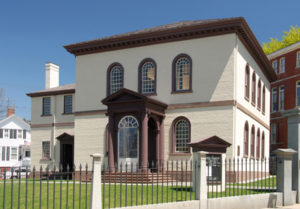 Newport, Rhode Island is the historic home to one of the oldest and certainly most influential Jewish communities in early American history. These men and women arrived in Newport as early as 1658 and by the time of the American Revolution they grew to a population of over thirty families. Touro Synagogue is the oldest existing synagogue in North America.
Newport, Rhode Island is the historic home to one of the oldest and certainly most influential Jewish communities in early American history. These men and women arrived in Newport as early as 1658 and by the time of the American Revolution they grew to a population of over thirty families. Touro Synagogue is the oldest existing synagogue in North America.
Newport, Rhode Island received its first Jewish residents as early as 1658. Jewish settlers arrived from Barbados, where a Jewish community had existed since the 1620s. They were of Spanish and Portuguese origin; their families had migrated from Amsterdam and London to Brazil and then to islands in the Caribbean. In Newport they formed a congregation called Nephuse Israel.
 By 1677, the community realized the need to acquire land for a Jewish cemetery. Two of the original immigrants, Mordechai Campanal and Moses Pacheco purchased the lot at the corner of what is now Kay and Touro Streets for this purpose. By 1758, the Jewish population had grown sufficiently that there was a need for a house of worship. The Congregation now known as Congregation Jeshuat Israel. Construction began on the synagogue in 1759. The end of the nineteenth century ushered in new life for the Touro Synagogue with the arrival of the eastern European Jews to the United States.
By 1677, the community realized the need to acquire land for a Jewish cemetery. Two of the original immigrants, Mordechai Campanal and Moses Pacheco purchased the lot at the corner of what is now Kay and Touro Streets for this purpose. By 1758, the Jewish population had grown sufficiently that there was a need for a house of worship. The Congregation now known as Congregation Jeshuat Israel. Construction began on the synagogue in 1759. The end of the nineteenth century ushered in new life for the Touro Synagogue with the arrival of the eastern European Jews to the United States.
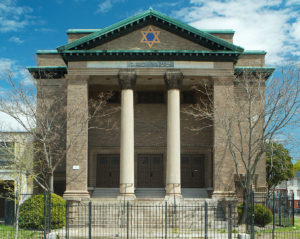 The founding Newport congregation organized as Yeshuat Israel never named the synagogue Touro. Those recognizing Abraham Touro’s generous gifts to restore the building, street, and boundary walls loosely called the synagogue Touro’s Synagogue in the mid-19th century. Under the Bimah lies a trap door that was used to house runaway slaves as part of the Underground Railroad. The trap door also represents the Marrano tradition of remembering the perils of Jews living in Spain and Portugal during the Inquisition and having to flee from soldiers of the Holy Office at a moments notice.
The founding Newport congregation organized as Yeshuat Israel never named the synagogue Touro. Those recognizing Abraham Touro’s generous gifts to restore the building, street, and boundary walls loosely called the synagogue Touro’s Synagogue in the mid-19th century. Under the Bimah lies a trap door that was used to house runaway slaves as part of the Underground Railroad. The trap door also represents the Marrano tradition of remembering the perils of Jews living in Spain and Portugal during the Inquisition and having to flee from soldiers of the Holy Office at a moments notice.
Beth Jacob’s synagogue, erected in 1906, and Temple Beth-El, was built in South Providence in 1911. Temple Emanu-El, which had a magnificent domed edifice, was erected in 1927.
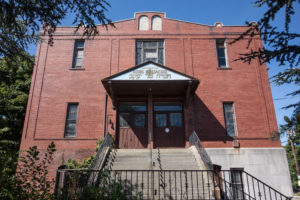 Twentieth-century Jews expressed their sense of community through religious affiliation and by supporting Jewish social-service agencies. In 1937, the Jewish community in Rhode Island reached 30,000. In 1963 the Greater Providence Jewish population was 19,600, including 13,440 in Providence and Pawtucket. In 2001, the number of Jews in Rhode Island dropped to 16,000, including 14,200 in the Providence area.
Twentieth-century Jews expressed their sense of community through religious affiliation and by supporting Jewish social-service agencies. In 1937, the Jewish community in Rhode Island reached 30,000. In 1963 the Greater Providence Jewish population was 19,600, including 13,440 in Providence and Pawtucket. In 2001, the number of Jews in Rhode Island dropped to 16,000, including 14,200 in the Providence area.
Today, approximately 18,500 Jewish men, women, and children call Rhode Island home. Supported by many synagogues, Jewish organizations, and social service agencies, Jewish life flourishes throughout the state.
Vermont
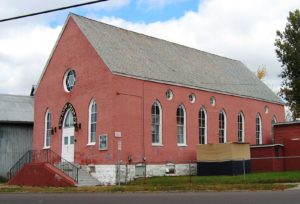 Vermont’s first Jewish congregation, Israelite Assembly, was established in 1867 in Poultney, slightly west of Rutland. These Jews were part of a wave of immigration that began in the 1830s and consisted mainly of poorly educated young men from small towns in Germany who settled in rural areas. In 1873, the community purchased a cemetery, the first Jewish burial site in the state. And in 1888, the congregation—which served not only Poultney but the New York towns of Granville, Middle Granville and Fair Haven—was chartered under a new name, The Congregation of Benai Israel and the Hebrew Cemetery Association.
Vermont’s first Jewish congregation, Israelite Assembly, was established in 1867 in Poultney, slightly west of Rutland. These Jews were part of a wave of immigration that began in the 1830s and consisted mainly of poorly educated young men from small towns in Germany who settled in rural areas. In 1873, the community purchased a cemetery, the first Jewish burial site in the state. And in 1888, the congregation—which served not only Poultney but the New York towns of Granville, Middle Granville and Fair Haven—was chartered under a new name, The Congregation of Benai Israel and the Hebrew Cemetery Association.
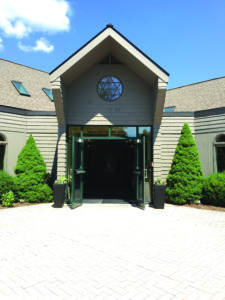 This congregation came to an end in the 1890s, and the Rutland Jewish congregation, founded in 1910 and originally called Adath Israel Congregation, became the focus of Jewish life in that area. Eventually, Burlington Jews established three neighborhood synagogues.The original building, erected in 1885, is a gabled brick structure at 168 Archibald Street; it is the oldest-known synagogue building in Vermont. Inside, wooden pews surround the central bimah, and the wall curving behind the Ark is reminiscent of the Western Wall.
This congregation came to an end in the 1890s, and the Rutland Jewish congregation, founded in 1910 and originally called Adath Israel Congregation, became the focus of Jewish life in that area. Eventually, Burlington Jews established three neighborhood synagogues.The original building, erected in 1885, is a gabled brick structure at 168 Archibald Street; it is the oldest-known synagogue building in Vermont. Inside, wooden pews surround the central bimah, and the wall curving behind the Ark is reminiscent of the Western Wall.
Little Jerusalem is the historic Jewish quarter in Burlington, Vermont. The neighborhood was located in Burlington’s North End, particularly along North Street. The community was vibrant between the 1880s and the 1930s. The religious and secular practices in Little Jerusalem resembled the shtetl life of Eastern Europe, due to the Eastern European origins of the community. Due to assimilation, intermarriage, secularization, and other developments, Little Jerusalem had largely faded as a distinct community by the time of the Second World War.
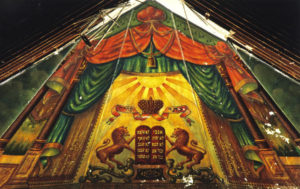 The Lost Shul Mural, as it has come to be called, was revealed beneath the walls of an apartment building that once housed the Orthodox Chai Adam Synagogue, founded in 1889, after splintering off from Ohavi Zedek. It was probably decorated in 1910 when the congregation engaged a young Lithuanian Jewish artist, Ben Zion Black, to paint the synagogue
The Lost Shul Mural, as it has come to be called, was revealed beneath the walls of an apartment building that once housed the Orthodox Chai Adam Synagogue, founded in 1889, after splintering off from Ohavi Zedek. It was probably decorated in 1910 when the congregation engaged a young Lithuanian Jewish artist, Ben Zion Black, to paint the synagogue
 The first recorded presence of an organized Jewish community in the Rutland area appeared with the establishment of the congregation Anshei Sholom in West Rutland in 1906, but Jews were living in Vermont prior to the Civil War. The gravestones of East Poultney display dates from the early 1800’s.
The first recorded presence of an organized Jewish community in the Rutland area appeared with the establishment of the congregation Anshei Sholom in West Rutland in 1906, but Jews were living in Vermont prior to the Civil War. The gravestones of East Poultney display dates from the early 1800’s.
By 1910, a movement of Jewish families from West Rutland to Rutland and a small influx of new families to the area served as theimpetus for the Rutland Jewish community to take on an identity of its own, called Adath Israel. For another score of years the Jews of Rutland held their services, meetings and classes in various building around town, including the old Marble Bank on Merchants Row. In February of 1927 the congregation purchased its present home, the former Baxter Memorial Library, for the princely sum of $12,500.